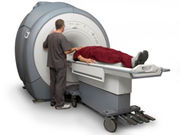Image quality decreased but was still acceptable in most cases studied
TUESDAY, Feb. 23, 2016 (HealthDay News) — An initiative to employ indication-specific computed tomography (CT) protocols and adjustment of scan parameters to decrease radiation exposure still delivers an acceptable level of diagnostic imaging quality, according to a study published in the February issue of the Journal of Medical Imaging and Radiation Oncology.
Chakkarat Sulagaesuan, M.D., from Ramathibodi Hospital Mahidol University in Bangkok, and colleagues compared dose reduction in patients (older than 15 years) who had emergency CTs of the head, chest, abdomen, pelvis, and abdominopelvic region before and after dose-reduction implementation protocols.
Before implementation, there were 786 studies, compared with 955 studies after implementation. The researchers found that all CT types were tied to reduced radiation dose in the post-implementation period. Average CTDIvol dropped after implementation versus before implementation for head (51.5 versus 109 mGy), chest (8.1 versus 30.4 mGy), abdomen (13.1 versus 41.8 mGy), pelvis (11 versus 38 mGy), and abdominopelvic region (11.2 versus 41.8 mGy). Average dose length products was also significantly lower for all CT types after implementation. While image quality decreased, almost all examinations received an acceptable diagnostic subjective image quality.
“Simple methods could help significantly reduce CT radiation exposure in ED patients while maintaining an acceptable level of diagnostic image quality,” the authors write.
Copyright © 2016 HealthDay. All rights reserved.








